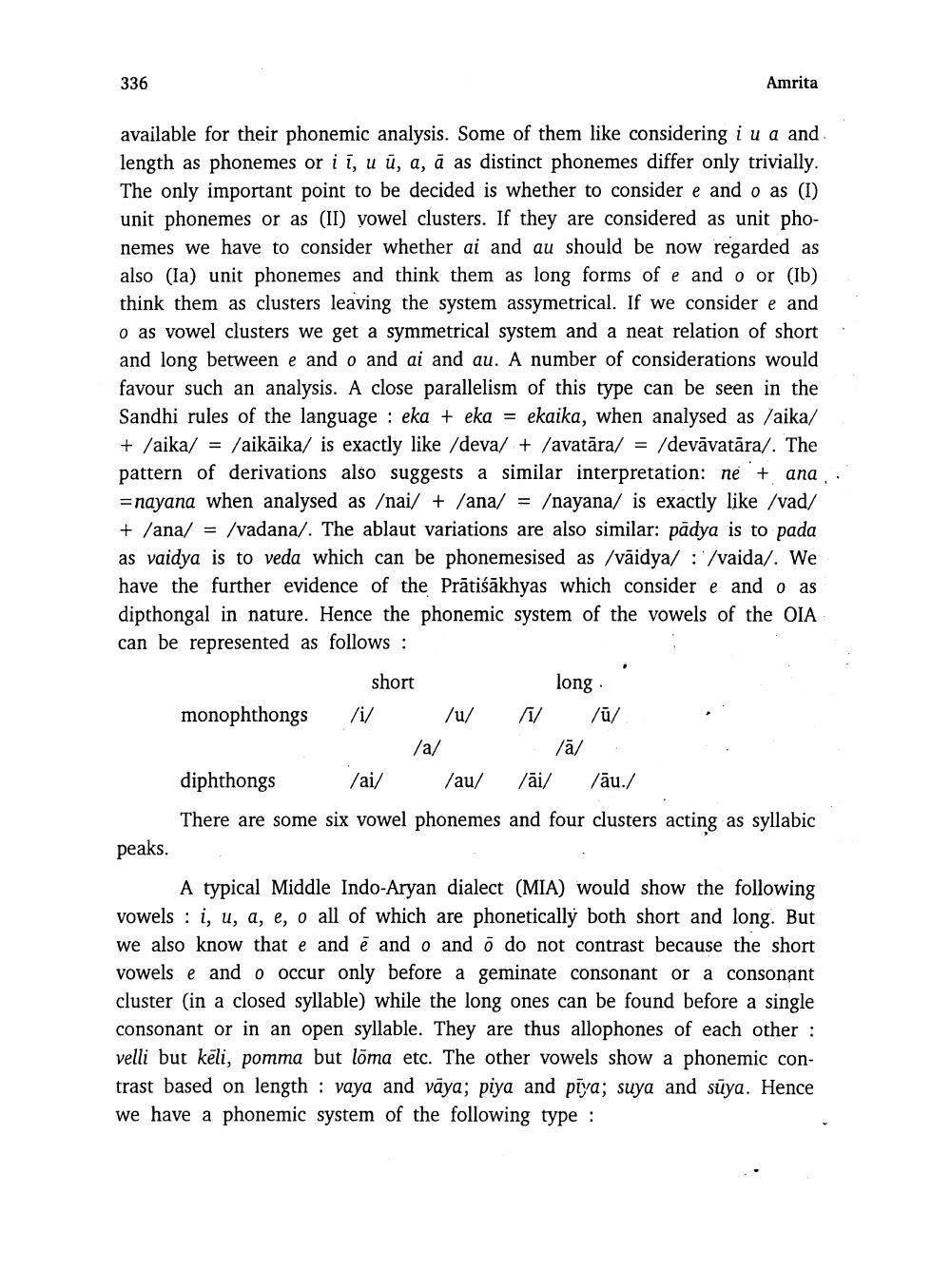________________
336
Amrita
available for their phonemic analysis. Some of them like considering i ua and length as phonemes or i i, u ū, a, ā as distinct phonemes differ only trivially. The only important point to be decided is whether to consider e and o as (1) unit phonemes or as (II) vowel clusters. If they are considered as unit phonemes we have to consider whether ai and au should be now regarded as also (la) unit phonemes and think them as long forms of e and o or (b) think them as clusters leaving the system assymetrical. If we consider e and o as vowel clusters we get a symmetrical system and a neat relation of short and long between e and o and ai and au. A number of considerations would favour such an analysis. A close parallelism of this type can be seen in the Sandhi rules of the language : eka + eka = ekaika, when analysed as /aika/ + /aika/ = /aikāika/ is exactly like /deva/ + /avatāra/ = /devāvatāra). The pattern of derivations also suggests a similar interpretation: né + ana : = nayana when analysed as /nai/ + /ana/ = /nayana/ is exactly like /vad/ + /ana/ = /vadana/. The ablaut variations are also similar: padya is to pada as vaidya is to veda which can be phonemesised as /vāidya/ : /vaida/. We have the further evidence of the Prātiśākhyas which considere and o as dipthongal in nature. Hence the phonemic system of the vowels of the OIA can be represented as follows:
short
long monophthongs /i/ /u/
lū/ /a/
// diphthongs /ai/ /au/ ai/ rāu./
There are some six vowel phonemes and four clusters acting as syllabic peaks.
A typical Middle Indo-Aryan dialect (MIA) would show the following vowels : i, u, a, e, o all of which are phonetically both short and long. But we also know that e and ē and o and 7 do not contrast because the short vowelse and o occur only before a geminate consonant or a consonant cluster (in a closed syllable) while the long ones can be found before a single consonant or in an open syllable. They are thus allophones of each other : velli but kēli, pomma but lõma etc. The other vowels show a phonemic contrast based on length : vaya and vāya; piya and piya; suya and sūya. Hence we have a phonemic system of the following type :




